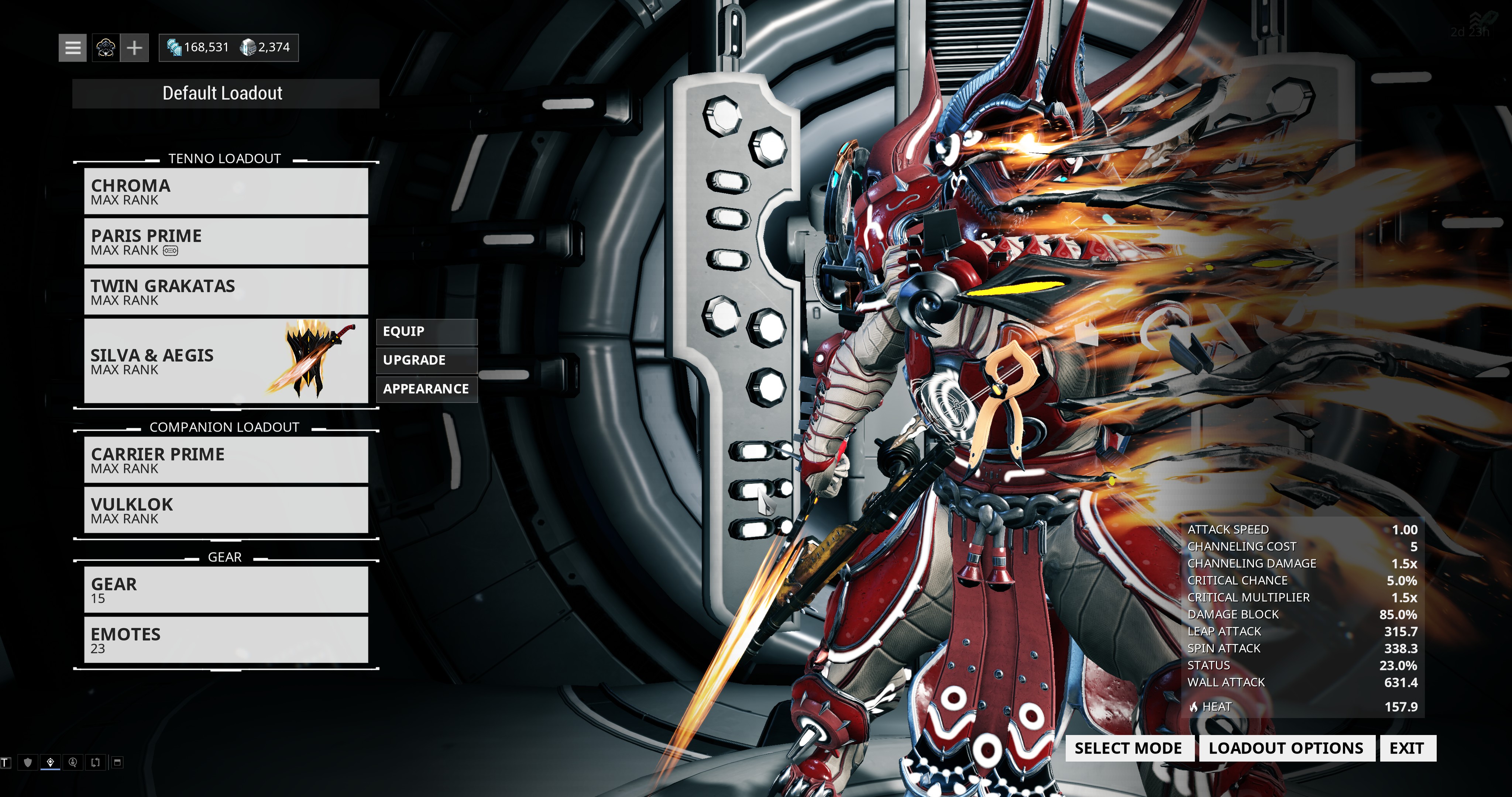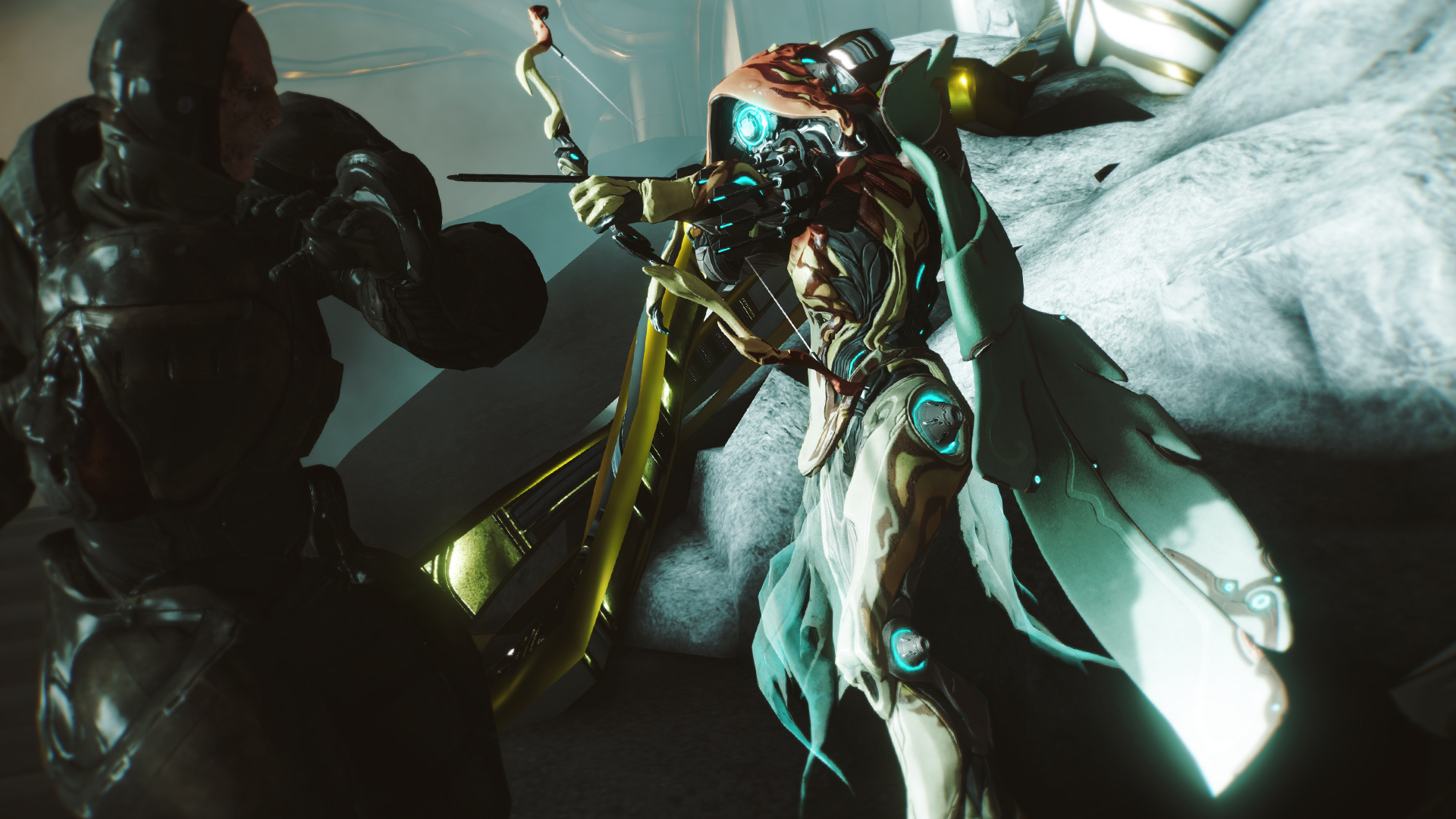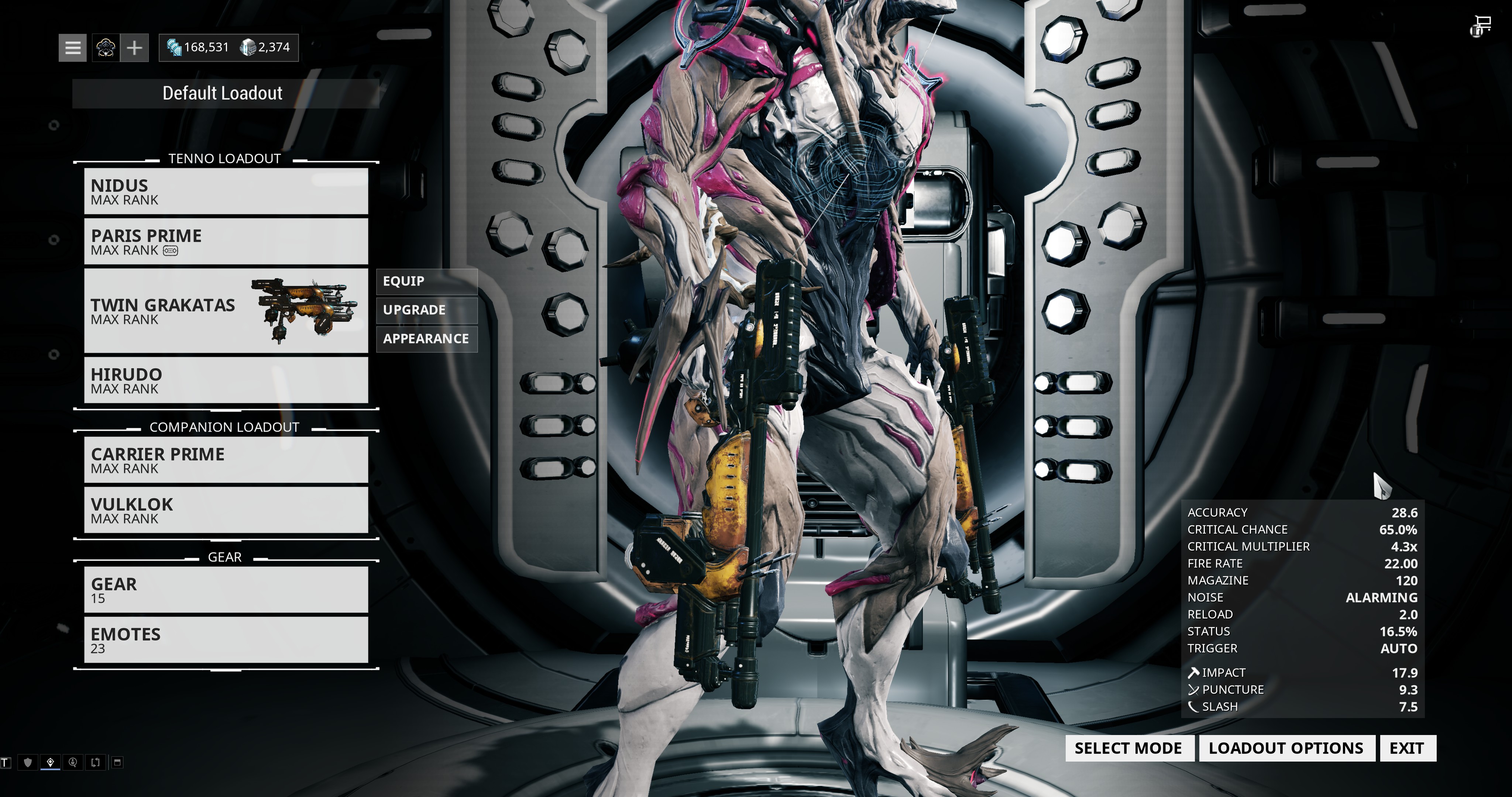Why Digital Extremes is finally reworking Warframe's level progression
Instead of constantly pushing forward, Digital Extremes is finally looking back.

The developers at Digital Extremes, makers of free-to-play loot shooter Warframe, aren’t strangers to change. What started five years ago as a third-person shooter set in an endless series of corridors has grown to include space combat, a wildly unexpected story, its own open-world zone, and more.
Some of these new ideas work better than others, but they always have one thing in common: they’re new ideas. The bolted-on plots and playgrounds are great for attracting attention from new players and attention, but as a result older features often take a back seat to the new. That changed in a big way earlier this month when Digital Extremes revamped and re-tiered more than 150 of Warframe’s firearms according to their practical and desired power levels.
Tiers in the rain
A lot of the weapons have really outdated tiering, so to speak.
Rebecca Ford
"A lot of the weapons have really outdated tiering, so to speak," Digital Extremes’ community manager Rebecca Ford said of the reason behind the changes. "So a new player can get access to one of the most powerful weapons in the game pretty early on and late-game players have already tried everything by that point, because nothing has really been categorized to the higher Mastery Ranks."
Mastery Rank is a kind of summary of every Warframe player’s overarching level. Among other things, it determines which weapons they can access—whether they buy them with real money or craft them in-game. To increase one's Mastery Rank, players have to first level up individual pieces of gear by completing missions and killing enemies. The idea was a continual loop of leveling up gear to achieve higher Mastery Ranks and, in turn, more gear to level up.
Before this update, however, it didn’t work like that in practice. Players had access to just about everything out of the gate and would only dip into weaker gear to goose their Mastery Rank for vanity, or other small conveniences. This unofficial class of gear became known as "mastery fodder."
According to Ford, the primary motivation behind this latest update was to "make Mastery Rank progression make sense with the power of weapons." That meant formally organizing the 150-odd weapons into "buckets," rather than letting the community decided what was good and what wasn’t. So from now on, every third Mastery Rank grants players access to pre-approved tiers of shotguns, grenade launchers, and rifles—with beam and then melee weapons soon to follow.

"We figure a new player—someone at Mastery Rank zero, one, two, or three—probably should have a damage output possibility innate in the weapons at a certain point," Ford elaborated. "So we bucketed our Mastery Rank groupings into DPS windows."
Keep up to date with the most important stories and the best deals, as picked by the PC Gamer team.
Keeping those groupings relatively even meant buffing a lot of the so-called fodder into higher categories. But damage-per-second wasn’t the only factor deciding which guns were and weren’t lethal enough. Ford acknowledged that Warframe, a game that lets you kill clone armies with the Mortal Kombat theme song, has a rather "abstract" arsenal. So Digital Extremes took every aspect of a weapon, from accuracy to secondary firing modes, into account when determining the new progression.
The example she kept coming back to was the Grakata. The fan-favorite assault rifle may sport "really low accuracy, but it has crazy high crit and status [chance]." So while it doesn’t look like a Rank 9 weapon on paper, its statistics even out "under the hood."
Warframe, for a new player, is complicated enough as it is.
Rebecca Ford
Spreading out weapons with more intangible abilities straightens out the game’s learning curve, too. Ford admits that "Warframe, for a new player, is complicated enough as it is," even now that Digital Extremes reworked the game’s tutorials over the years. Concepts like critical hits and status effects shouldn’t be new to anyone that’s played an RPG before, but Warframe couches them in a labyrinthine system of mods, upgrades, and other damage types. It’s a lot to take in all at once. "They might not quite be ready for that," Ford added. "They still maybe haven’t mastered the movement system or aim gliding."
Of course, changes this fundamental will have unintended consequences. The most obvious one is something Digital Extremes has dealt with before: locking players out of content they already own. The solution is a simple, but slightly odd one. Anyone that already bought or crafted their weapons before the new groupings is exempted from them. So if you’re only Rank 8, but still love your Grakata, you just got a leg up on your peers.

Digital Extremes has "grandfathered in" long-time players after similar weapon changes. It’s just never occurred on this scale. So in a way, the studio has created two classes of players overnight. There are those who have access to some of the game’s best weapons before they rightly should and those who don’t (at least until everyone rises through the ranks anyway).
But really, this isn’t the first generational gap among the long-running game’s audience. Each time the developers make sweeping changes, they draw a line between new and old players’ shared experiences—between those who had space combat and story quests to break up the loot grind from the get-go and those who didn’t. Ford was hesitant to guess what such an all-encompassing change to Warframe’s arsenal might affect without more data, but eventually came back to the Grakata.
She described the rifle as a "community meme weapon"—an inside joke that spread partly because it was so easily accessible at Mastery Rank 0. Now that necessity has pushed it up a grade or nine, the joke may no longer be as universal. It’s too soon to say if the change will kill the joke, or simply make it that much more special to players in the know.
Splitting the players
I can say in the current era of Warframe ... we’re a lot better equipped to rapidly iterate.
Rebecca Ford
Warframe will need to address this separation soon, as Digital Extremes continues on what Ford calls a mission to "review the old." With the game’s open-world, space combat, and classic corridor shooting in a healthy enough state, the developers have decided it’s time to focus on what already has and hasn’t worked.
"First is, three years ago I think, we retired something called the Dark Sectors," she elaborated. "Which are part of the game that clans could compete for. We used the word—and I can say this pessimistically from the player point of view—we said it’s temporarily on hold. And that’s been three years. Which is an eternity in gaming." Ford explained that Dark Sectors "became an exploited sort of clan competition," but are now returning as "basically like an endless dungeon crawl."

Not everyone was happy when Dark Sectors were removed initially. They were even less happy when it took them years to return. But between making the clan battles less exploitable and focusing on entirely new content, the choice was "pretty obvious for the game’s growth." So features like The Second Dream, Warframe’s first cinematic story quest that released in 2015, took center stage instead.
Until now, that is. Along with the news that Dark Sectors are back came word that Trials (Warframe’s eight-player equivalent of MMO raids) are going away. It’s supposedly temporary, but existing fans only have Digital Extremes’ word that won’t mean another three years before the feature circles back around. But between the small (albeit passionate) Trials community, and the intense amount of support the buggy missions required, the choice seems to be obvious once again.
"I can’t say with any certainty how long it will take, but I can say in the current era of Warframe—so as we were speaking of, the five-years-ago era versus now—we’re a lot better equipped to rapidly iterate," Ford said. "And we’re a lot more confident in the changes we feel would be better for this content type."
That sounds like the overarching ethos at Digital Extremes right now: confidence. Even as the game has absorbed more players, more attention, and more features in the past five years, Warframe never felt satisfied with what it was. Now, however, the developers finally seem confident enough with the brand of high-flying action that Warframe delivers to focus on fundamentals that have been left to languish. There’s a lot of work to be done, as the company’s often lofty promises indicate, but Warframe is nothing if not amenable to change.

